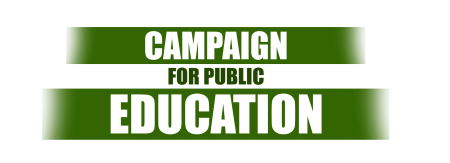solution based on money
"Board forced to consider school closings"
The Globe and Mail SUSAN KRASHINSKY April 17, 2008
Plagued by falling enrolment and rising stress on costs, the Toronto District School Board considered a report last night recommending school closings in certain areas.
Over the past seven years, public schools have lost 33,000 students – the equivalent of 40 elementary and 10 high schools, board chair John Campbell said.
Mr. Campbell and six other trustees wrote the General Asset and Program Planning group report, which notes 257 schools across the city have less than 80 per cent enrolment. About one-third of those fall below 60 per cent.
This is a problem because school funding is based on student numbers. There is a small buffer built into the system, but schools with less than 80 per cent enrolment don't have enough funding to cover basic operating costs.
"Just because you have fewer students, you still have to have a principal … you have to have the boiler working, you can't have the roof leaking," Mr. Campbell said.
The GAPP group's enrolment data are two years old. But Mr. Campbell says it illustrates a trend. Recent numbers "wouldn't add much to the picture," he said, since they are still losing students.
The report suggests an "optimal size" of 450 students in elementary schools and 1,200 at the secondary level. Closings in low-enrolment zones would allow for more schools in growing suburban areas.
The report says size is less important to student success than the quality of education. But enrolment guidelines will help with environmental and financial sustainability, and Mr. Campbell said it will refocus school distribution to areas that need it most.
Once the TDSB decides to close a school, it must offer the property, which is a public asset, to others such as the city and the Catholic board.
If they do not have a use for it, the board can sell the property after declaring it surplus, or lease it through the Toronto Lands Corp., an arm's-length agency of the TDSB that currently manages 99 properties owned by the board but not used as schools.
While a few properties will eventually be sold, most are being leased and will continue to be leased, according to the TLC. It is currently renegotiating leases – many of which are written in a way that means the TDSB subsidizes its tenants – to make them more financially viable. It is also developing a management plan for the properties to present to the board's May meeting.
Once some properties are sold off, Mr. Campbell said, the board will have capital to build schools and fix distribution.
"It's good that the Toronto board is thinking ahead," said Annie Kidder, director of People for Education. "But I'm a bit worried that this report names an optimal size for schools that … is primarily based on how well the funding formula works, rather than what's best for schools from an educational point of view.
"It shouldn't be a solution based on money. That's the bottom line."
Schools by the numbers
$2.3 billion Toronto District School Board operating budget for 2007/2008
211 Toronto elementary schools with enrolment of less than 80 per cent capacity
46 Secondary schools with enrolment of less than 80 per cent

